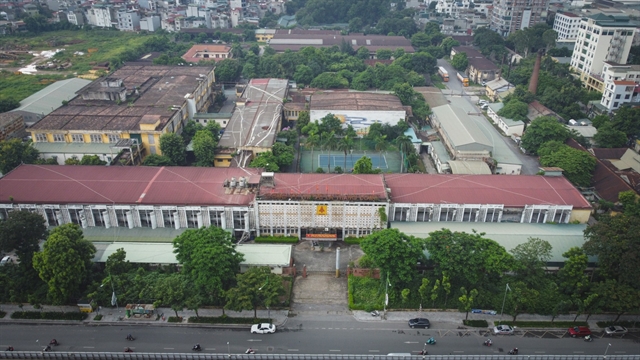 Opinion
Opinion

 |
| Deputy minister of Science and Technology Bùi Thế Duy. — VNA/VNS Photo |
Vietnam News Agency (VNA) spoke to Deputy Minister of Science and Technology Bùi Thế Duy on the development of the Provincial Innovation Index (PII), and how the framework will help drive socio-economic development based on science, technology and innovation.
Why is there an urgent need to develop Provincial Innovation Index (PII)?
Like many other countries in the world, at the national level, Việt Nam has been using the annual Global Innovation Index (GII) by the World Intellectual Property Organisation (WIPO) to identify the country’s strengths and weaknesses, in order to come up with suitable solutions and measures for improvement. Việt Nam also builds and issues relevant policies to accelerate socio-economic development.
Therefore, in recent years, Việt Nam’s GII has been showing positive progress. In the 2022 GII report, WIPO recognised that the country performs above the average of those in the same income group.
For 12 consecutive years, Việt Nam has always achieved higher innovation results compared to its level of development. This shows the effectiveness of converting resources into innovations. Việt Nam is one of the few in the low-middle income group closing in on the higher tiers of the innovation index.
At the local level, localities are still struggling in implementing the Government’s resolution on improving the national GII. This is due to the lack of local statistics, and the gaps between the international assessment standards and the actual situation in Việt Nam’s localities.
In addition, the differences between localities in terms of the socio-economic scale, population, area, economic structure, and development direction require them to select different socio-economic growth models, which are based on different science - technology applications and innovations, and fit their specific contexts and conditions. Therefore, the suggestion is to have a customised set of innovation indexes, which will allow for better and more practical management.
Accordingly, the Ministry of Science and Technology (MoST) has developed provincial innovation indicators following the 10-step instruction of the Organisation for Economic Cooperation and Development (OECD). This is a comprehensive index that suits the actual and distinctive context of the Vietnamese localities.
 |
| A Vietnamese student-designed coronavirus-proof helmet was selected for the Top 10 of the 5th International Invention Innovation Competition in Canada. — VNA/VNS Photo |
How has the PII pilot programme been implemented in 20 cities and provinces before the nationwide scale-up?
The MoST has been actively working with WIPO and relevant agencies to develop the PII, which consists of 51 indicators in seven pillars, following the GII’s principle, which is comprised of five input and two output pillars.
The five input pillars are the factors that create favourable conditions for socio-economic development based on science, technology and innovation, which are institutions, human capital and research, infrastructure, market sophistication and business sophistication. The two output pillars, which reflect the impact of science, technology and innovation on socio-economic development, are knowledge, technology and creative outputs, as well as the related effects.
The MoST has piloted PII in 20 cities and provinces, which are divided into four groups. Evaluation results show that the index is highly compatible with the specific characteristics of the local socio-economic development models. The group in the lead consists of developed localities with robust science - technology and innovation activities, while those in the bottom group have many limitations in this aspect.
The 20 cities and provinces selected for the pilot programme are from six different economic zones with different income levels and economic structures, meeting the criteria to represent all 63 cities and provinces across the country. During the programme, the feedback and contributions from these localities have helped the MoST to develop and perfect the index and its indicators.
The pilot revealed that as Việt Nam’s statistical system has yet to catch up with the international standards, several indicators’ data are not yet available both at the national and local levels. Therefore, this is an issue to be addressed in the near future for better evaluation of the local and national situation. Following the pilot programme, the PII will be applied throughout the country in 2023.
How does the development and implementation of PII at the national scale help contribute to the country’s socio-economic development?
According to the analysis and assessment at each piloted locality, the innovation indicators and pillars have pointed out its five strengths and five weaknesses. On that basis, the locality can identify key issues to address and have appropriate direction in creating solutions for socio-economic growth based on science - technology and innovation. This will help improve competency in terms of trade, competitiveness and innovation of the locality and the country.
The pilot programme of PII on 20 cities and provinces is expected to be an instrument that measures innovation results nationwide in 2023. It is hoped that PII will serve as a tool for each locality to determine their strengths, weaknesses, as well as potentials and necessary conditions to drive socio-economic development based on science, technology and innovation. The PII framework is built in a comprehensive manner, which helps each locality to reflect and make appropriate adjustments for socio-economic growth and increased national competitiveness.
An independent international expert appointed by WIPO also conducted an independent assessment of the index. Results show that the framework and indicators are appropriately designed to reflect the status of the subject. Data analysis, score calculations and ranking are also conducted in a thorough, accurate, transparent and reliable manner.
The pilot programme also showed that the PII is powerful enough to offer useful solutions for socio-economic development. Therefore, cities and provinces must consider this an annual key mission for local socio-economic growth based on science, technology and innovation, and use the assessment results in this aspect. — VNS